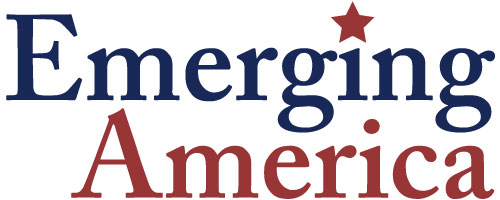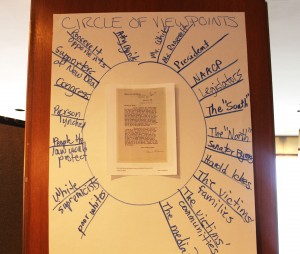Prior to investigating a source, students examine the variety of people and groups that would interpret the source differently. Members of the class brainstorm to arrive at a list of all the different viewpoints, then one by one speak from the perspective of the varying stakeholders. This thinking routine, published by the Visible Thinking project at Project Zero, helps students consider the…
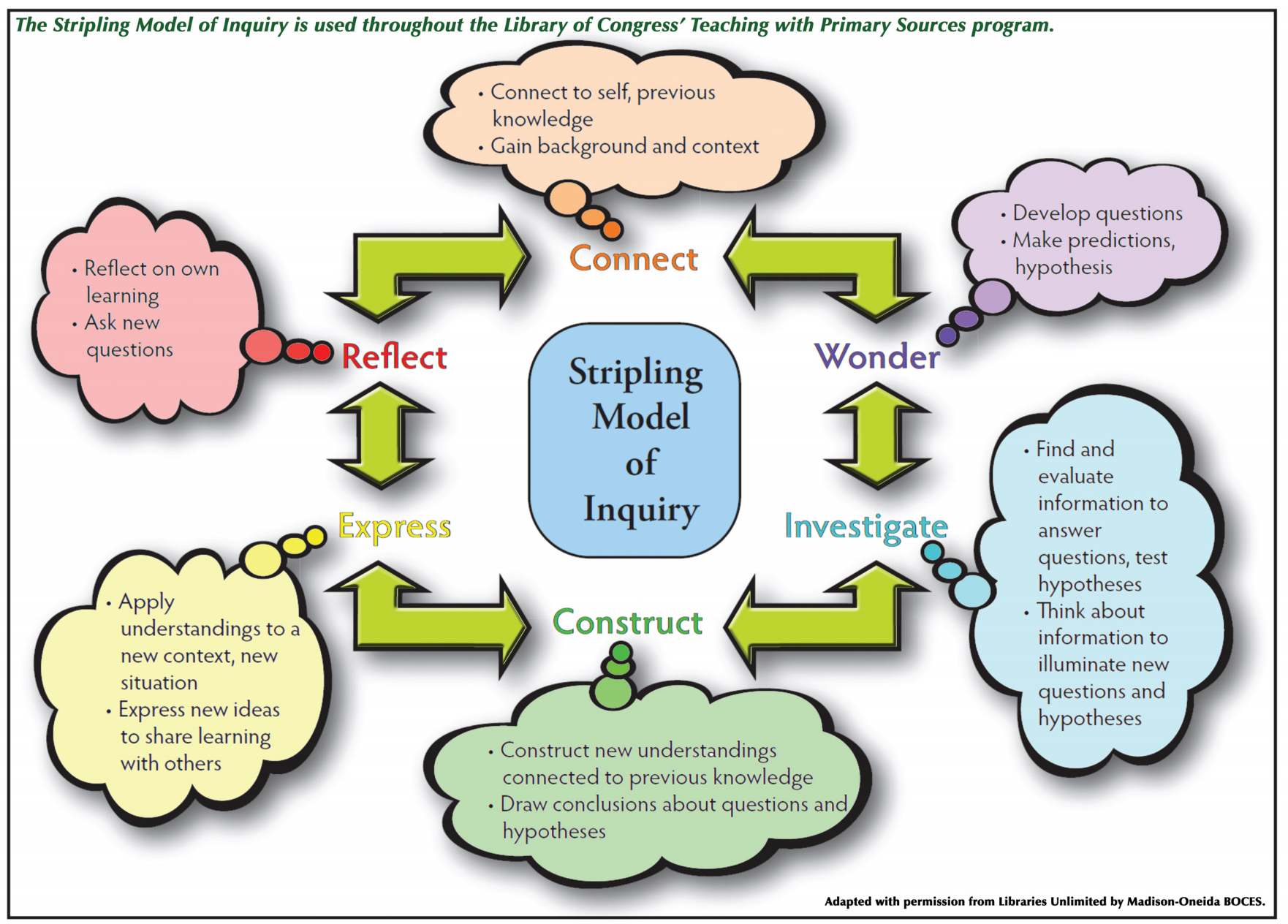
The Stripling Inquiry Model represents the inquiry process graphically to help students make sense of the inquiry process. The Library of Congress Teaching with Primary Sources program has helped to popularize the model. Find an in-depth discussion of inquiry and links to additional models and resources at Emerging America's Inquiry Strategies page.
…
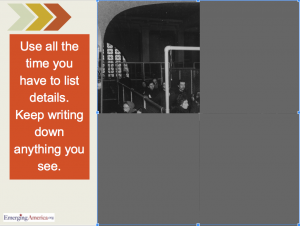
A way to spur inquiry and close observation is by examining one quarter of the primary source at a time.This six-minute exercise gives students a chance to focus in on particular details of the source. Having students write notes about each quadrant helps students to generate ideas and text fragments they can use in their writing; the partial view makes it easier for students to make notes…
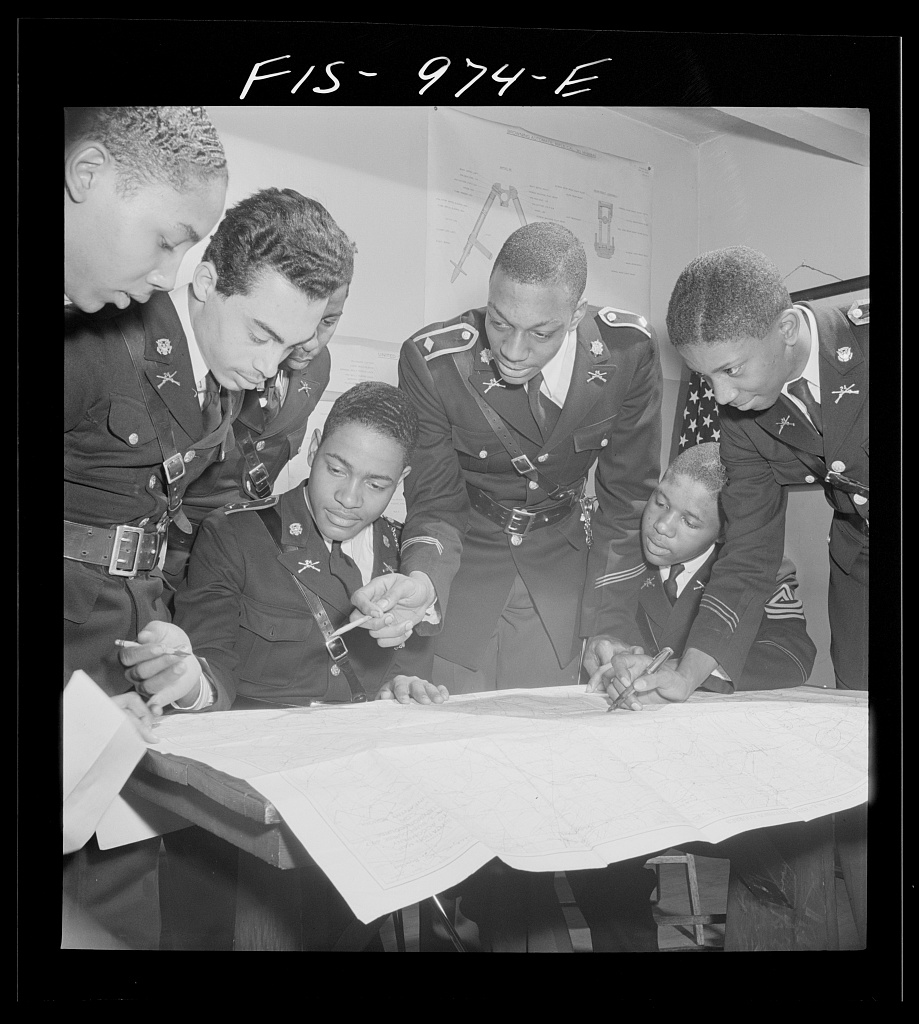
The Library of Congress teacher Primary Source Analysis Tool helps students learn the skills of inquiry. The Library of Congress Teachers page suggests prompts to analyze: maps, film, oral histories, newspapers, political cartoons, books and other printed texts, sheet music, photographs and prints, manuscripts, and sound recordings. …
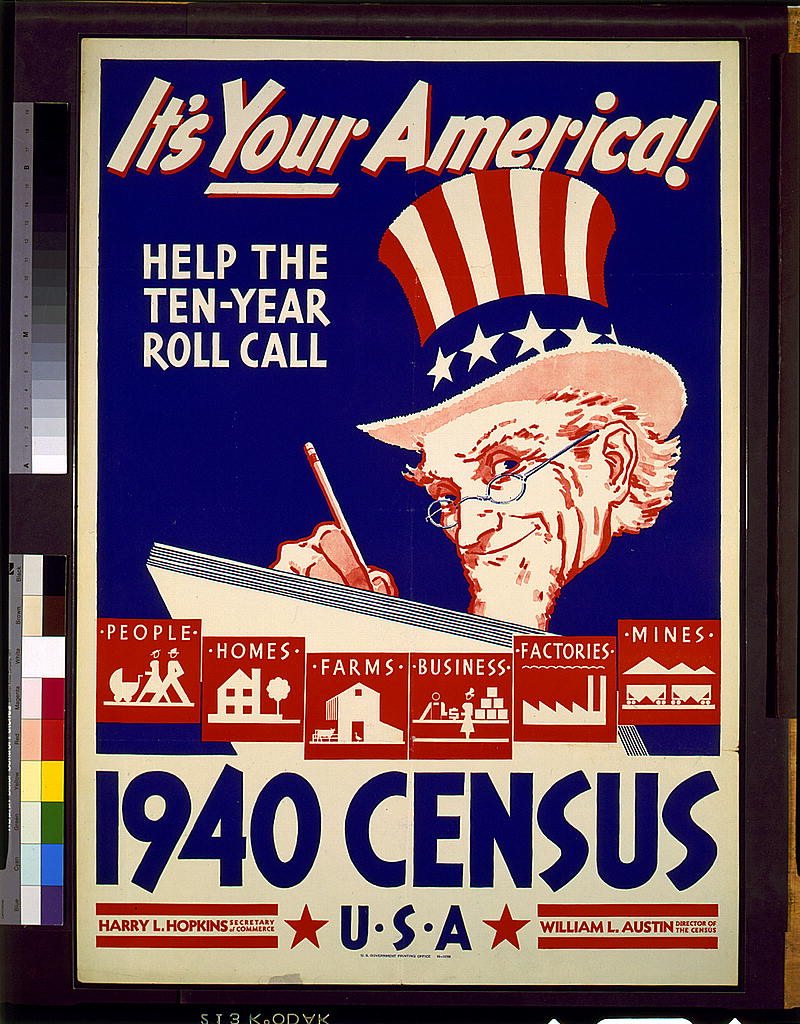
Access an excellent slide show on the Census from Library of Congress Teaching with Primary Sources Consortium member Dr. Elizabeth Osborn, Indiana University Center on Representative Government!
The slides include photographs of Census workers, text from the U.S.…
